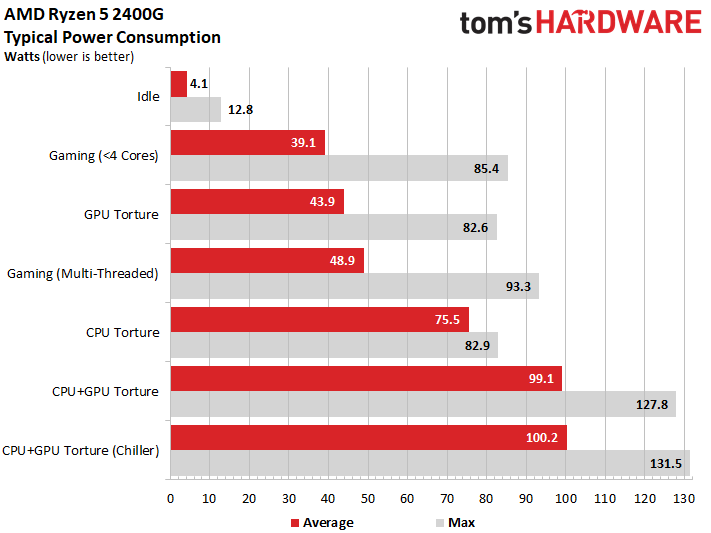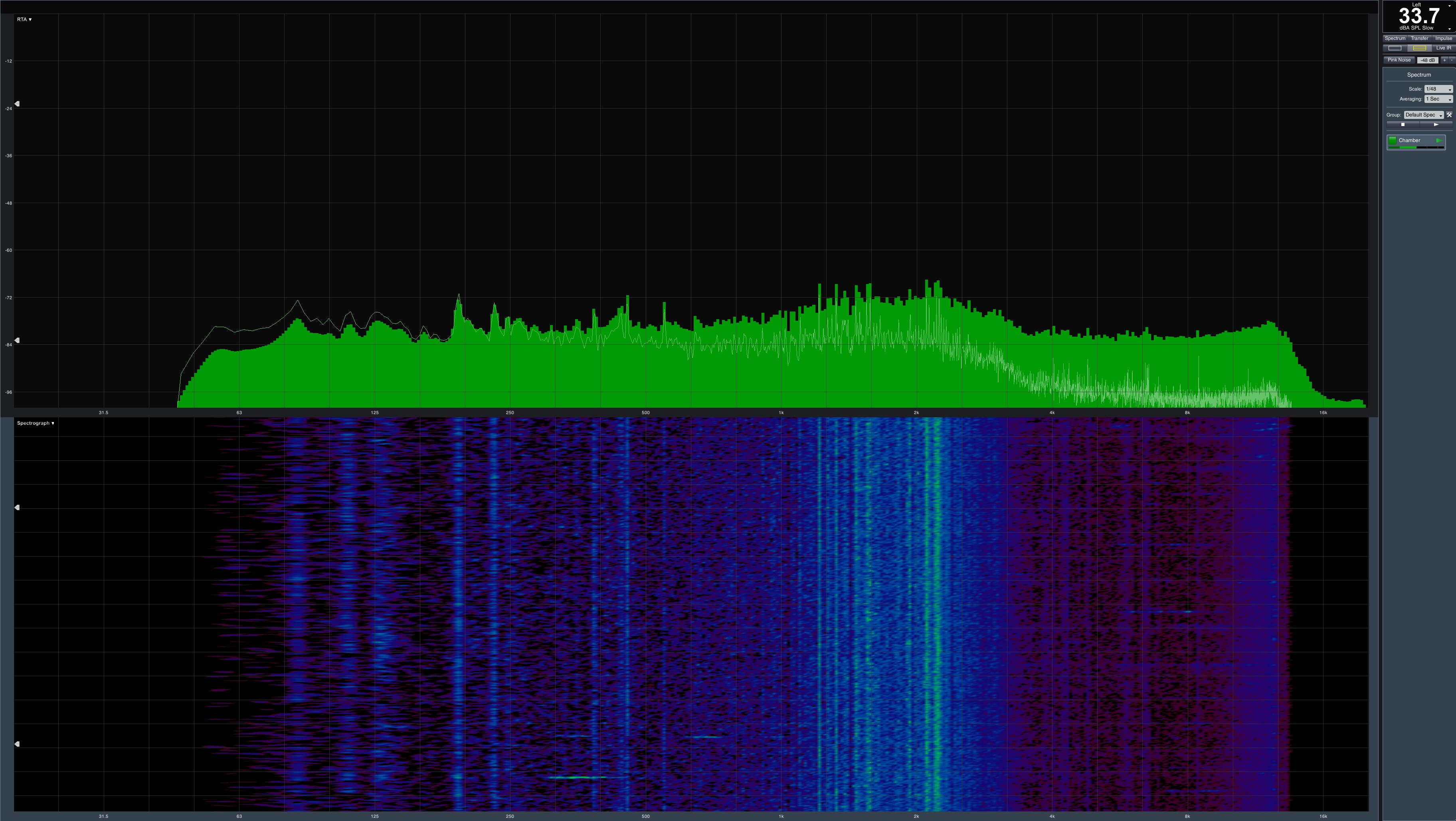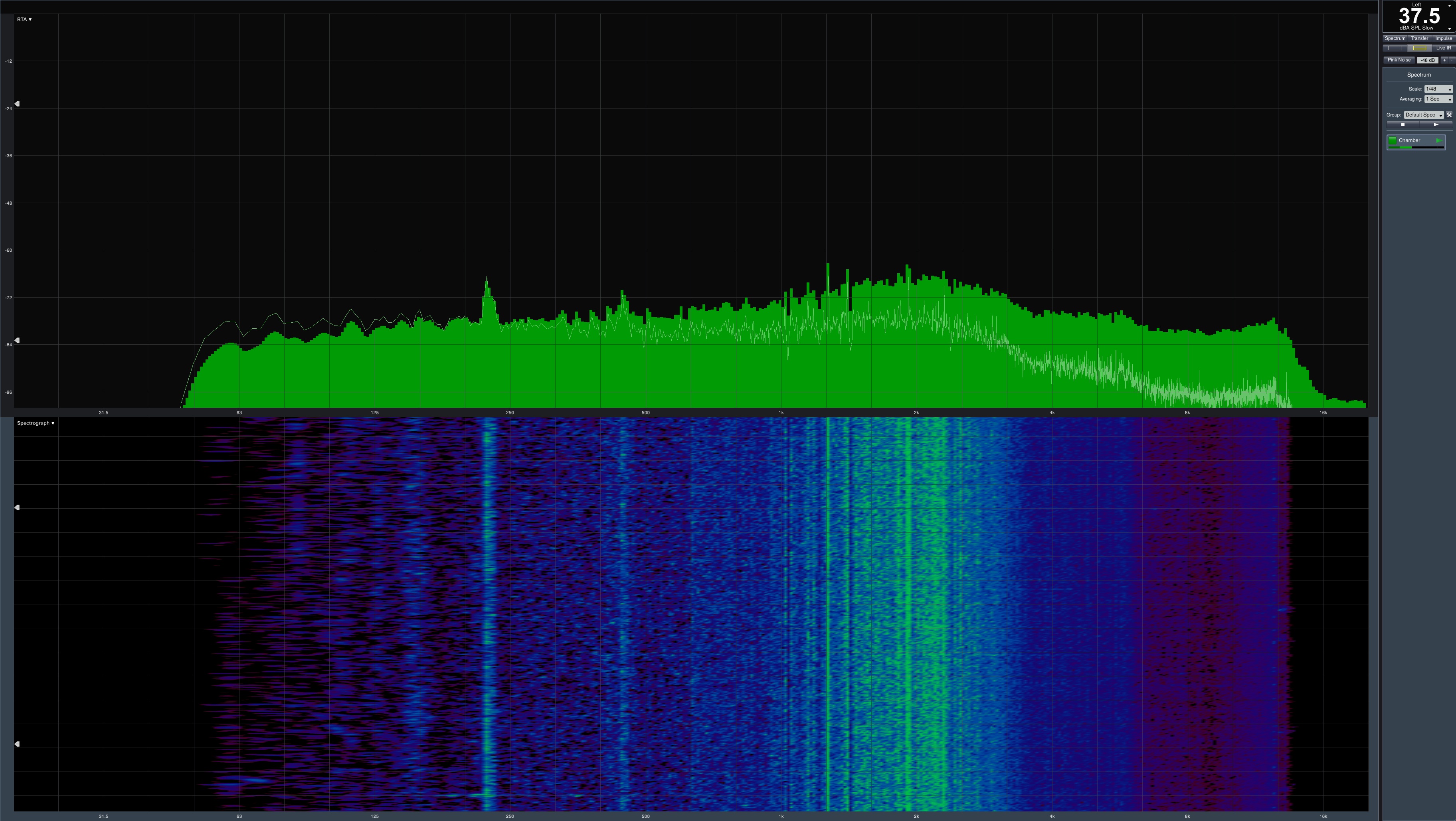AMD Raven Ridge Thermal/Power Analysis: Ryzen CPUs With Vega
Power Consumption & Noise
Power Consumption
We put the previous pages' results into one bar graph to sum them all up. It’s plain to see that the brief and sporadic peaks convey a worst-case picture of power consumption. However, you'll never see these processors try to maintain those levels. Consequently, we base our analysis on the red bars, which represent averages over prolonged periods of time.
AMD’s Ryzen 3 2200G stays below the 40W mark during everyday gaming loads. It takes a stress test to push the chip much higher. It's only then that you'll see power numbers in excess of 65W.
The Ryzen 5 2400G is more power-hungry thanks to higher clock rates, a more resource-rich GPU, and the ability to better-utilize its Zen cores through SMT technology. Still, it stays below 50W during everyday gaming loads.
Power consumption does rise sharply when we fire up the stress tests, of course. And at that point, AMD's Wraith Stealth cooler throws in the towel, resulting in throttling.
Ultimately, both of AMD’s Raven Ridge-based processors are easy to cool under normal operating conditions. There’s really no reason to suggest a better cooling solution unless you plan on overclocking, in which case you'll almost assuredly want something with more thermal capacity.
Noise
AMD’s latest processors appear almost identical when we measure the noise their bundled fans make. Both of them require a 100% duty cycle under load in order to keep up. Consequently, we're comparing acoustics at idle to the noise you'll hear in a typical gaming scenario.
With nothing else going on, the two systems run at 1588 RPM and ~32°C. There's barely any low-frequency bearing noise apparent in the spectrum analysis. The motor is responsible for readings under 1 kHz, while the rest is due to fan turbulence. At 33.7 dB(A), we'll call this solution quiet, which is to say the fan is almost inaudible in a closed PC case.
Get Tom's Hardware's best news and in-depth reviews, straight to your inbox.
But it's not completely silent. We're blaming that on the motherboard's somewhat overzealous fan controller. Dipping down to 1200 RPM probably would have been fine, resulting in a measurement of just over 30 dB(A).
Under load, the fan runs at almost maximum speed. It doesn't matter whether you use PWM or voltage control; the motherboard only allows up to 1906 RPM. Both processors reach this, whether you're gaming or running a stress test. And as we've established, there's just not enough airflow for prolonged stress testing. To be sure, a beefier cooler would have been nice.
At this observed maximum speed, the noise level increases to 37.5 dB(A) for both gaming and stress testing.
These numbers are alright for everyday operation, but the noise is definitely noticeable. While we wouldn't call it loud, the motor sounds strained and it growls a bit more. Our frequency spectrum graph reflects this.
MORE: Best CPUs
MORE: Intel & AMD Processor Hierarchy
MORE: All CPUs Content
Current page: Power Consumption & Noise
Prev Page Combined Stress Testing: Benchmarks & Results Next Page Summary & Conclusion
Igor Wallossek wrote a wide variety of hardware articles for Tom's Hardware, with a strong focus on technical analysis and in-depth reviews. His contributions have spanned a broad spectrum of PC components, including GPUs, CPUs, workstations, and PC builds. His insightful articles provide readers with detailed knowledge to make informed decisions in the ever-evolving tech landscape
-
Combat_Medic The prices you chose to use here are bogus - the $99 and $169 MSRP are what they're actually going for.Reply -
AgentLozen ReplyCombat_Medic said:The prices you chose to use here are bogus - the $99 and $169 MSRP are what they're actually going for.
The prices from Amazon or NewEgg (or whatever) are usually inaccurate. I think Tom's should provide us with the MSRP and the internet price. That way, if the internet price is malfunctioning and showing a +50% markup, at least we know what it's SUPPOSED to sell for.
edit: minor fix -
FormatC When I wrote this review, we had only the official MSRP from AMD. The availability in Germany looks ok and the prices in EUR with VAT are lower :)Reply -
Ninjawithagun The prices (provided via direct link to Amazon.com) are now correct. Unfortunately, they are all sold out...lol.Reply -
JamesSneed These seem to be very efficient for the CPU and GPU performance they deliver. Nifty more options for budget PC's.Reply
I am left wondering if the 14nm process AMD is using, is having issues scaling to higher frequencies as it appears you keep Zen and Vega at lower clocks and they are very efficient. -
FormatC I really like the new power management and it is finally nothing else as efficiency-orientated mobile technology for the desktop.Reply -
nuclearpowerofattorney Maybe the 2400G is so smart and powerful, that when it reaches critical computational capacity, it evolves to become sentient, and thus unruly. Only after it is rebooted, to have the sentience removed, will the system cease its rebellious behavior. (Actually, I don't think this..but it's all I've got).Reply -
Rookie_MIB For the 2400G, bundling the better Wraith Spire could probably avoid the throttling bouncing around by preventing it from hitting the thermal limits under the more taxing loads.Reply
Eventually though they're going to have to find out what's causing it to get stuck in that loop. -
7angrytangerines Obviously 2400G wants to protect itself from some poor saps trying to use it for cryptocurrency mining.Reply





